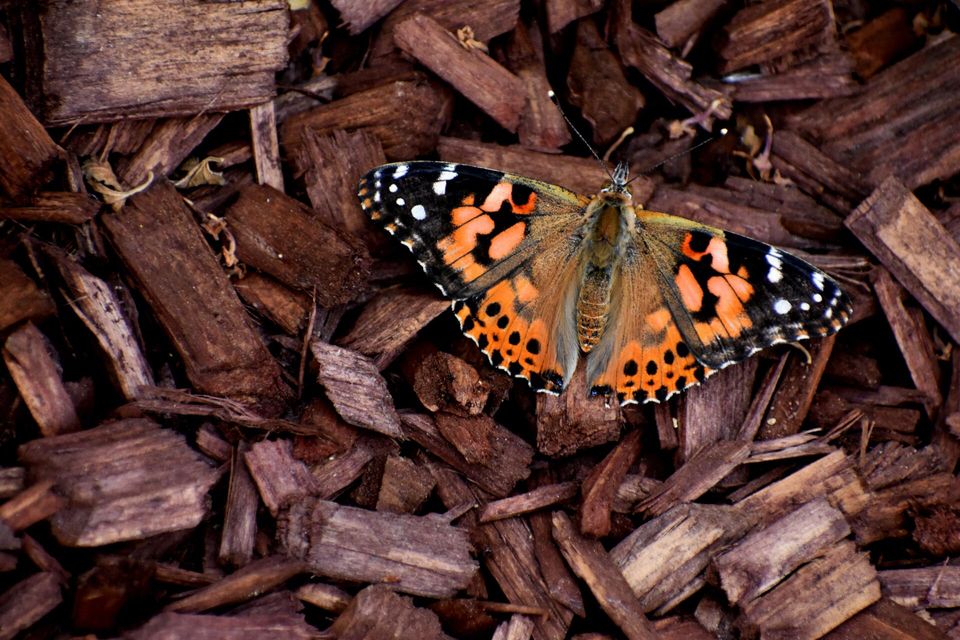Let’s Talk About Mulch

Mulch is any material that covers your soil to discourage weeds, help the soil retain moisture, and add texture and color to your garden. Essentially there are two types, organic (bark, straw, leaves, grass clippings, cocoa bean hulls, etc.) and inorganic (usually rock, but can be made plastics, recycled tires, recycled glass, etc.). The difference between the two is that organic mulches break down and provide nutrients to the soil. Inorganic mulches do not.
Bark is a great choice for a flower garden or mixed bed but can also be used around trees and shrubs. Annuals and perennials can benefit greatly from the nutrients it provides, and when applied properly it does a great job of preserving moisture, keeping roots cool, and preventing weeds. It also has the advantage of breaking down slowly. It should last all summer with no reapplication. It is quite attractive and comes in different colors to provide a look that coordinates with your home. Surprisingly, most bark, except for cedar, is great for slopes. It stays put and helps prevent erosion.
Rock is a great choice for trees and shrubs. It comes in a wide variety of colors, shapes, and sizes. Like bark, it stays put well on slopes and helps prevent erosion. It is more expensive up front, but since it is a one-time expense, it can be cheaper (and less work) in the long run.
Applying mulch correctly is important to keep your plants healthy. We recommend following these guidelines.
- No matter what mulch you use, weed the area beforehand.
- Use landscape fabric under inorganic mulch. It will prevent the rocks from sinking down into the soil.
- Do not use landscape fabric under organic mulches because it prevents the nutrients from reaching the soil.
- Keep mulch at least 1-3” away from vegetable and flower stems, and 6-12” away from shrubs and tree trunks. This prevents disease.
- Apply rock or bark mulch 3-4 inches deep. Any less, and weeds will easily find their way through. Any deeper and you can weaken your plants’ root systems and suffocate them. Do not build a mound of mulch around each plant! Instead, keep an even depth throughout the whole area.
- Measure your area and calculate how much mulch to buy first. One cubic yard of materials will cover 100 square feet about 3 inches deep. Keep in mind, if the area is full of mature plants, you will need a little less. If you are adding bark to an existing bed, measure the current depth of the mulch and order only what you need to maintain the proper 3-4” depth.
- Keep your rock mulch clear of leaves, sticks and other debris. As it decomposes, any debris provides a great place for weeds to germinate. You can remove debris by hand or simply blow it away with a leaf blower.
Hopefully these tips make your mulching project a success and help cut down on your weeding and watering, giving you more time to enjoy your summer.
